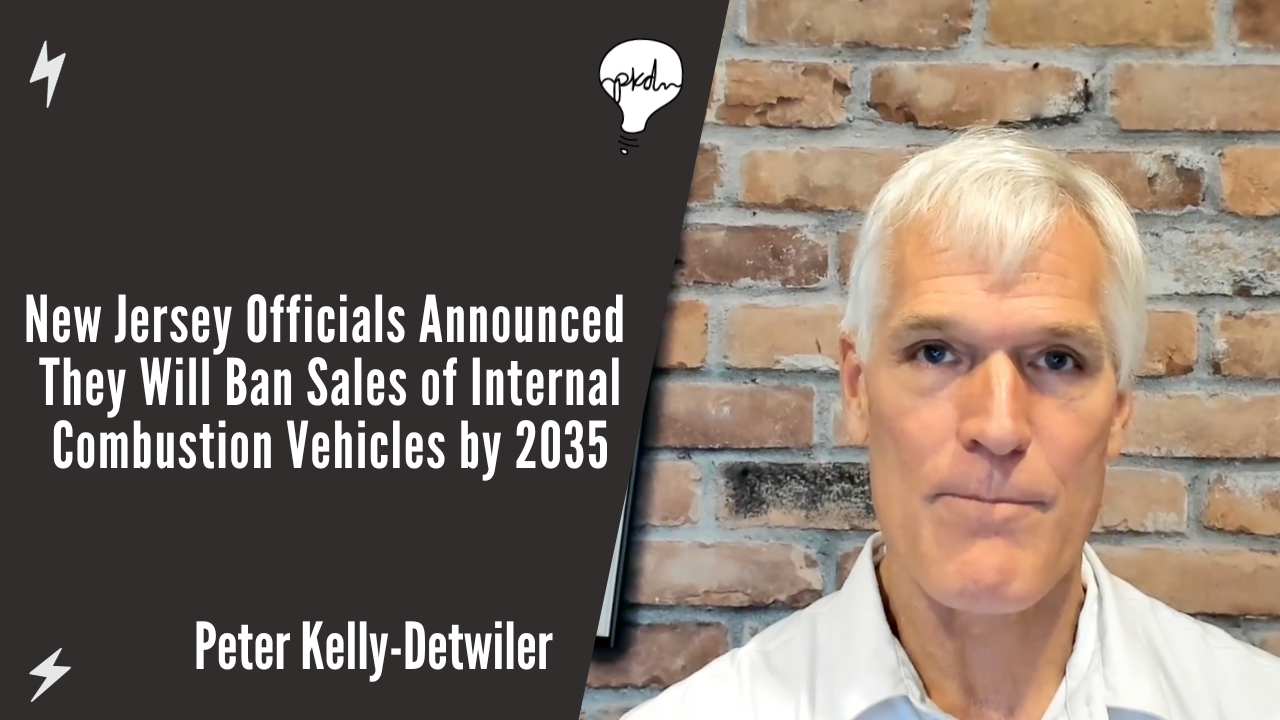Energy Future: Powering Tomorrow’s Cleaner World
Peter Kelly-Detwiler
Energy Future: Powering Tomorrow's Cleaner World invites listeners on a journey through the dynamic realm of energy transformation and sustainability. Listen to this podcast on:
To Put Today’s EV News in Perspective, It Helps to Take the Long View
In recent months, EV headlines have been dire. Tesla layoffs, Ford and Rivian losses, and GM stumbling raise concerns. EV opponents are crowing, claiming that EVs are inferior products, foisted on customers by inept governments before their time.
Some of that is true – EVs aren’t as good as they could be, are currently too expensive, and our charging networks are inadequate and often poorly maintained. The previously torrid growth of EVs has flatlined, as early adopter markets appears sated and masses haven’t yet seen affordable and attractive models.
But to write off electric vehicles is premature and also mistaken. EVs will eventually prove to be the superior technology, and dominate future markets. To understand why, you have to drop the short-term snapshot view, adopt a long view, and look at the evolution in technology. And you have to look at China.
The electric propulsion system is so much more efficient. U.S. DOE data shows that EVs are 4.4 times more efficient than ICE vehicles.
EV and battery technology is still young. And so is the accompanying charging infrastructure.
But the tech is inevitably going to get better; it’s still in its infancy. Battery companies are making new announcements near daily, with respect to battery chemistries, energy densities, charging speeds, and duration.
That should not be a surprise. Battery technology is all about materials science, and with human brains yoked to supercomputers, there’s no doubt as to the direction battery chemistry is going.
Example 1) China’s CATL is warranteeing a battery to take a car over one million miles.
Example 2) The Lucid Air’s battery can charge about 300 miles in 15 minutes.
That rate of technological change is only likely going to accelerate.
Meanwhile, ICE technology doesn’t get much better - Nissan recently stated it took the industry nearly three decades to increase motor efficiency by 10%.
Focus on the trends and the underlying technology. They will lead you to the inevitable conclusion: today’s bloodletting will be forgotten as electric vehicles - once they are mature - are destined to be recognized as superior. Better efficiency, far better acceleration, and with lower centers of gravity, more fun to drive.
The question ultimately won’t be “Are EVs better?” Instead, it will be “who makes the best vehicle, which happens to be electric?” That’s where the problem lies for anybody who cares about the future of the U.S. auto industry.
In the West, we haven’t yet embraced an electric future. But China has. A report last week from Inside EVs, in which the reporter spent a week in the country, visiting Shanghai and the Beijing Auto Show commented, “the showroom floor was filled to the gills with new electrified models from every single domestic automaker. They all had something to prove, and by god, they were trying… And no matter the price point, they all had responsive, integrated vehicle interfaces that were quick, pretty, and ubiquitous.”
So, while we let our ideological rivalries get in the way of developing national economic strategies, we run the risk of letting yet another industry that we once mastered slip away. China has intentionally become a world leader in battery innovation and production. It is also the leading maker and consumer of electric vehicles. 43% of cars sold in March had a plug, a total of 743,000. The U.S.? 135,000.
We need to dispense with the short-sighted and politically driven views as to what is occurring today, understand what’s really happening here, and adopt the long view suggesting that the electric drive is inevitably a superior technology. We need to recognize this for what it is: A global competition for the future of mobility – one of the planet’s most important industries. Then we need to get behind a national policy – irrespective of which party is in power – to develop better battery tech and lower cost vehicles.
The effort to win this game and remain competitive won’t be comfortable. It won’t be easy. And mistakes will be made along the way. A leading industry is at stake, supporting millions of well-paying jobs. Do or do not, there is no try




















